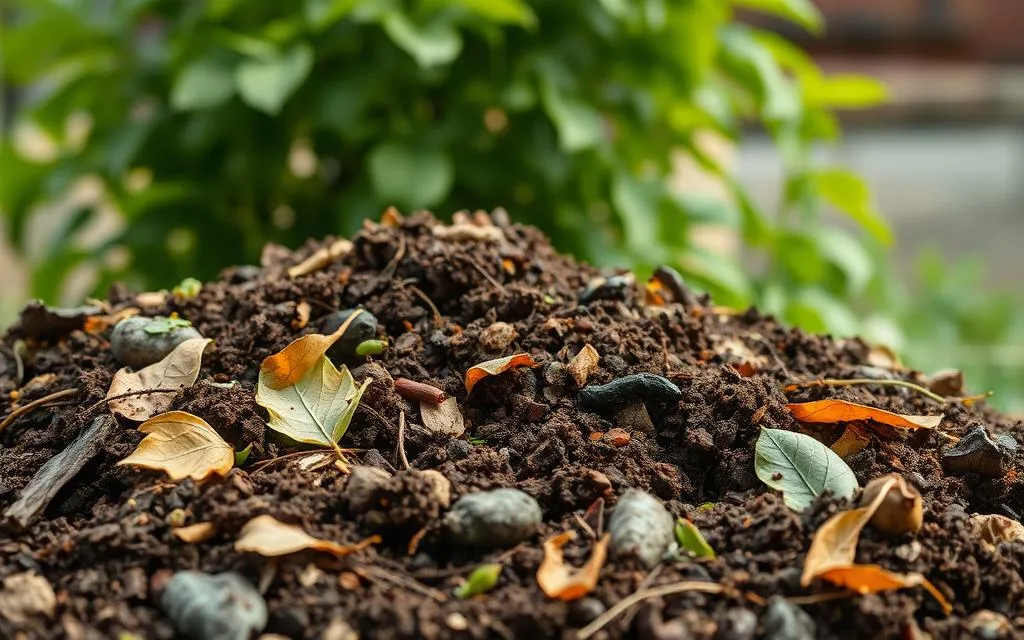How to Plant Milkweed Seeds – We love gardens and know how important milkweed is for monarch butterflies. It’s the main food for their caterpillars, helping butterflies thrive1. This guide will help you plant milkweed seeds successfully. You’ll be part of saving these beautiful insects.
Maybe you’re new to gardening or have some experience. Either way, we’ll show you how to grow a great milkweed patch. We explain everything from preparing the seeds to taking care of the plants. Soon, you’ll have a garden that monarch butterflies will love.
Ready to learn about growing milkweed? Your garden can become a haven for monarchs with your care.
Table of Contents
ToggleImportance of Milkweed for Monarch Butterflies
Milkweed is vital for monarch butterflies. It is their only plant to lay eggs and for caterpillars to eat2. Milkweed grows in most places in the U.S., besides some parts of the West and Hawaii2. Sadly, the monarchs’ numbers have dropped greatly, mainly in their Eastern home, by about 80%3.
Milkweed as the Sole Host Plant for Monarch Caterpillars
Monarch caterpillars depend on milkweed for their life. It’s the main food they need to grow2. In Virginia, you can find 15 types of milkweed, with five that help monarchs the most, like swamp milkweed and common milkweed3. Monarch moms lay their eggs on these because it helps the caterpillars survive better3.
Benefits of Growing Milkweed in Gardens
Milkweed attracts more than monarchs. It also brings native bees, honey bees, and even hummingbirds to your garden4. These plants come in bright colors like yellow, green, and purple. This makes your garden not only beautiful but helpful for local wildlife4.
Understanding Cold Stratification
Are you hoping to plant milkweed in your garden? Knowing about cold stratification is key. This process wakes up milkweed seeds, telling them to start growing5.
What is Cold Stratification?
Cold stratification is about chilling milkweed seeds in a moist, cold place, often a fridge. It copies the winter environment that seeds naturally go through. This makes the seeds ready to sprout when it gets warmer5.
Importance of Cold Stratification for Milkweed Germination
If you skip this step, milkweed seeds might not grow. Cold, moist conditions are needed to break the seed’s rest and help it sprout5. Some milkweed seeds can all grow if they have been through this. Others can grow without but a lot slower with it6.
But, not every kind of milkweed needs this cold treatment. Seeds that like warm weather, like Asclepias curassavica, should be soaked in warm water. This way they don’t need cold treatment before planting6.
Knowing why cold stratification is important helps your milkweed seeds grow. This leads to beautiful plants that attract monarch butterflies5.
To grow milkweed well, you need to let its seeds break their dormancy. This requires the right conditions and will lead to a beautiful garden. It’s not hard, just needs some preparation and patience567.
Preparing Milkweed Seeds for Planting
To grow milkweed in your garden, preparing the seeds right is key. The best way is cold stratification. This method imitates the seeds’ natural outdoor winter setting.
Cold Stratifying Seeds Indoors Using the Refrigerator Method
The refrigerator method is easy and works well to stratify milkweed seeds. Start by putting the seeds between wet paper towels or in damp sand. Then, seal them in a plastic bag and put them in the fridge for 3-6 weeks8. This process copies the winter conditions, awakening the seeds from dormancy for planting.
Different milkweed types need various cold times before planting. For instance, some, like Common Milkweed, need 30 days in the cold. Others, like Western Sand Milkweed, need 60 days8. Warm weather milkweeds, such as Tropical Milkweed, don’t need this chilling time8.
The cold time could be 30 to 60 days, based on the milkweed’s type8. Watching the seeds closely for signs of sprouting is important for good growth.
After the cold, it’s time to plant the seeds. The advice is to use 2-inch pots, putting 1-2 seeds in each8. When you water, do it at the base to prevent too much water and fungus8. Also, make sure the young plants get enough light from an indoor light or near a sunny window8.
There’s a step where seedlings get used to being outside. This should happen slowly, over about a week. It helps them get ready to grow well outside8.
Planting Milkweed Seeds Outdoors
Some milkweed kinds need a chilly start outdoors. So, plant these seeds outside in the fall9. The best time to do this is November. It lets the seeds get cold in winter and grow in spring9. This suits perennial types, not the ones that grow only in hot seasons for many9.
To put these seeds out, scatter them on the ground. Then, cover them with a bit of soil, about 1/4 to 1/2 inch deep9. An article gives 10 steps for this, with clear directions on spacing the plants9. While planting them 6 inches apart is a good rule, the exact space isn’t always super important. But using labels to name your seeds can help keep them safe and away from animals9.
Using this method, the seeds go through nature’s full growth cycle. It’s a simpler way for some folks10. The common milkweed is marked as an easy one to start with10. The Xerces Society helps find places to get milkweed seeds from10. Special nurseries like High Country Garden and others sell milkweed plants.
Starting Milkweed Seeds Indoors
Starting milkweed seeds indoors gives you a jump start. You help the seeds get a strong beginning. This happens by planting them in seed trays or containers, creating the best growing atmosphere for them11.
Sowing Seeds in Seed Trays or Containers
First, put a well-draining potting mix in your trays or pots. Plant 2-4 seeds in each, then cover them with a layer of soil. This should be about 1/4 inch thick12. Keep the soil damp and place everything in a sunny window or under lights. Keep the temperature between 75-80°F during the day and 65-70°F at night11.
Caring for Milkweed Seedlings
Seeds usually sprout in 3-5 days. Once sprouted, give them sunlight or lights right away to grow strong, not tall12. Avoid spraying water directly on the seedlings. Water from the bottom to keep the tiny roots safe12.
When they show 4 true leaves, move them to bigger pots or the garden. But, prepare them first by slowly getting them used to outdoor conditions13.
This way, you get to see your milkweed plants bloom longer in the summer. Plus, you’ll be helping monarchs and other pollinators flourish. With the proper care, your milkweed seedlings will soon be thriving in your garden121113.

Transplanting Milkweed Seedlings
Time to move your milkweed seedlings into the garden. This step is important and takes care. With a few key steps, you can help your plants move smoothly. We’ll look at how to transplant and harden off seedlings. Also, we’ll pick out the best spot for them in your garden.
Hardening Off Seedlings
Transplanting isn’t a quick job. It’s vital to let your seedlings get used to the outside slowly. This step helps avoid shock as they adjust to new environments14. Start by keeping them in the shade for short times. Then, slowly expose them to more sun and wind. This makes them stronger and more ready to face the outside world14.
Choosing the Right Planting Location
Choosing where to plant your milkweed takes some thought. Pick a spot that gets lots of sun, because milkweeds love sunlight15. Make sure the soil drains well by adding compost. Milkweed can’t live in wet soil16.
Some kinds of milkweed, like Asclepias incarnata, are easier to move because they don’t have long taproots16. But others, like Asclepias syriaca, are a bit harder because of their deep roots16. For these, it’s key to take the whole root when you move them to help them survive16.
After transplanting, keep the soil moist to support root growth16. Water the seedlings often for the first week to help them start well in their new spot15. By doing all these steps right, your milkweed will have a good beginning and thrive141516.
how to plant milkweed seeds
Planting milkweed seeds helps monarch butterflies and other pollinators. Aim to plant the seeds about 1/4 inch deep. Make sure they’re scattered evenly and lightly covered with soil. Remember, milkweed seeds need regular water until they start sprouting17..
In the fall, from mid-October until it freezes, is the perfect time to plant seeds. This lets nature freeze and thaw the seeds, preparing them to sprout in spring. If planting in spring, the seeds should be cold-stratified indoors for six weeks first17..
Start by clearing the planting area and loosening the soil with a rake. Choose a sunny spot for the milkweed, since it loves full sun. Keep in mind that some milkweed plants might not bloom for a few years after planting17..
These simple steps will help you plant milkweed seeds successfully. This effort will not only beautify your garden but also support monarchs and other important pollinators171819..
Ongoing Care for Milkweed Plants
Once your milkweed plants are set up, they’re quite low-maintenance. Just water them right and maybe give a little fertilizer. This way, your milkweed area will stay healthy for a long time20.
Watering and Fertilizing Requirements
Water your milkweed plants often, especially in their first year, to keep the soil moist. However, don’t let it get too wet. For Common milkweed, you might not need to water it except in very dry weather. It should get about one to two inches of water at a time20.
Some types of milkweed, like the Zizotes and Tuberosa varieties, don’t like wet soil. They need the soil to be almost totally dry before you water them again. But Tropical Milkweed and others can handle more water21.
Usually, milkweed doesn’t need a lot of extra fertilizer. Too much nitrogen can cause lots of leaves but few flowers. A bit of compost or a slow-release fertilizer can be good every now and then. And remember, don’t use pesticides on your milkweed. This protects the butterflies that visit it2021.
Trimming the flowers off your milkweed in early summer helps it stay healthy. And in the fall, cut off old stalks. Just make sure to leave about 6 inches of the stalks behind in the cold months. This little bit left provides a home for insects when it’s cold22.
Native milkweed bushes come back every year, which is great for the environment. With some good care, your milkweed garden will be a favorite stop for monarch butterflies. And it will stay that way for many years to come.
| Milkweed Variety | Height | Bloom Color | Moisture Tolerance |
|---|---|---|---|
| Common Milkweed (Asclepias syriaca) | 2-4 ft. | Rose-purple | Dry to medium, well-drained |
| Butterfly Weed (Asclepias tuberosa) | 1-2 ft. | Light orange | Dry to medium, well-drained |
| Swamp Milkweed (Asclepias incarnata) | 4-5 ft. | Mauve, pink, or white | Moist to wet |
| Showy Milkweed (Asclepias speciosa) | 1-3 ft. | Rose-purple and pink | Dry to medium, well-drained |
| Purple Milkweed (Asclepias purpurascens) | 3-4 ft. | Red-purple | Dry to medium, well-drained |
| Whorled Milkweed (Asclepias verticillata) | 1-2 ft. | White | Dry to medium, well-drained |
| Sandhill Milkweed (Asclepias humistrata) | 1-3 ft. | Pink, lavender, or white | Dry to medium, well-drained |
Know what your milkweed plants need for water and food. This will help them grow well and support butterflies for many years202122.
Attracting Pollinators to Your Milkweed Patch
Planting milkweed is key to help monarch butterflies. But, for a truly lively garden, think about adding other plants. Milkweed brings in bees, butterflies, moths, and hummingbirds. Adding more native flowers and herbs boosts your garden’s draw for pollinators23.
Building a garden for pollinators means choosing flowers that bloom at different times. This way, you can feed them all season long. A mix of plants not only attracts but sustains pollinators24.
- A variety of goldenrods including ‘Golden Glory’, ‘Crown of Rays’, and ‘Romantic Glory’ add continuous yellow and nectar24.
- Black-eyed Susans, such as ‘Little Henry’ and ‘Goldrush’, make a great pair with the goldenrods24.
- Tansy, another great plant, attracts pollinators as well24.
- For amazing blue and purple, add Asclepias incarnata, Asclepias tuberosa, and more. These include Swamp milkweed and Purple coneflower25.
With a variety of nectar-rich plants, you help more than monarchs. Your garden will teem with many important pollinators. This makes your garden stronger and more beautiful. Doing this is a big win for your garden and the nature around you23.
Common Milkweed Varieties
Gardeners can pick from many native milkweed types, all with unique features and needs. Knowing about these plant varieties and their specific region best helps in creating a garden that supports pollinators26.
Native Milkweed Species for Different Regions
In the U.S., there are 73 species of native milkweeds, with monarchs using 30 as their host plants27. Different regions have their favorites. For instance, the Midwest and Northeast love common milkweed. The Southeast prefers butterfly milkweed and swamp milkweed. The South Central area, like Texas, goes for green antelopehorn and antelope-horns. Out West, you’ll find showy milkweed in restoration areas. Arizona and New Mexico enjoy species like hairy balls milkweed and narrowleaf milkweed27. California has six milkweed types, with narrow-leaf milkweed being a popular choice27.
When picking milkweed for your garden, stick with the native kinds that fit your local climate. This ensures your garden does well and helps the environment26.
| Milkweed Variety | Average Height | Planting Zones | Germination Time | Mature Height | Spacing |
|---|---|---|---|---|---|
| White Swamp Milkweed | 36″ to 60″ | 3 to 9 | 14 to 40 days | 36″ to 60″ | 12″ to 18″ |
| Common Milkweed | N/A | N/A | N/A | N/A | N/A |
| Showy Milkweed | N/A | N/A | N/A | N/A | N/A |
| Butterfly Milkweed | N/A | N/A | N/A | N/A | N/A |
The Monarch butterfly population has dropped by nearly 96%. Planting diverse native milkweeds is key to helping these butterflies succeed26.
Conclusion
Planting milkweed helps the monarch butterfly28 and our gardens. This guide shows us how to grow milkweed from seed. We’ve learned to create a home for these amazing creatures29.
This guide is for anyone, whether you’re experienced or just starting. It explains why milkweed is crucial for monarchs28. You’ll learn how to plant and take care of your milkweed. Now, you can support your local ecosystem29.
As we work on our milkweed gardens, remember, it takes time to see the results29. Together, we can help monarchs by providing a lot of milkweed. This also supports our pollinators’ health282930.
FAQ
What is the importance of milkweed for monarch butterflies?
Milkweed is very important for monarch butterflies. It’s the only place where their caterpillars can eat and grow. This makes it crucial for any garden or natural area. By growing milkweed, you help provide food and a place for monarchs to live.
Why is cold stratification important for milkweed seeds?
Cold stratification is needed for many milkweed seeds to start growing. This process involves keeping the seeds in a cold, damp place for some weeks, like in a fridge. It’s like the cold winter conditions these seeds would find in nature. This tells the seeds it’s time to sprout.
How can I prepare milkweed seeds for planting?
For planting milkweed, cold stratification is key. Use the refrigerator method by putting seeds in damp sand or paper towels. Then, put them in a sealed bag and into the fridge for 3-6 weeks.
Can I plant milkweed seeds directly outdoors?
Yes, for seeds needing cold stratification, you can plant them outdoors in the fall. Scatter them on the ground and cover lightly with soil. Over winter, they will get the cold they need to grow in the spring.
How do I start milkweed seeds indoors?
To start seeds inside, use a good potting mix and plant 2-4 seeds in each container. Cover with a little soil and keep moist. Put them by a sunny window or under lights. Keep the temperature around 75-80°F during the day and 65-70°F at night.
How do I transplant milkweed seedlings into the garden?
Before planting seedlings, make sure they are ready for the outdoors. Slowly let them get used to outside for 7-14 days. Pick a sunny spot, since milkweed grows best with lots of sun.
How do I care for milkweed plants after they are established?
After planting, milkweed usually just needs water. Make sure the soil is damp but not too wet, especially in the first year. No need for extra plant food. Growing too fast from too much food can stop them from making flowers.
What other plants can I grow to attract more pollinators to my milkweed patch?
To attract even more pollinators, add other native flowers and herbs that bloom at different times. This will give you a full season of flowers and help bees, butterflies, moths, and even hummingbirds find food.
Source Links
- https://zerowastehomestead.com/how-to-plant-milkweed-seeds-and-grow-milkweed-plants-for-pollinators-ultimate-guide/
- https://www.xerces.org/milkweed-faq
- https://piedmontmastergardeners.org/the-importance-of-milkweed-to-monarchs/
- https://www.gardendesign.com/plants/milkweed.html
- https://storemedia.extension.iastate.edu/SecondaryFiles/Milkweed Cold Stratification Process.pdf
- https://monarchbutterflygarden.net/cold-moist-stratification-milkweed-seeds/
- https://www.wildflower.org/expert/show.php?id=10705
- https://www.saveourmonarchs.org/blog/its-time-to-start-cold-stratifying-your-milkweed-seeds
- https://monarchbutterflygarden.net/fall-planting-milkweed-10-steps/
- https://www.gardengatemagazine.com/articles/how-to/start-seeds/how-to-harvest-and-plant-milkweed-seeds/
- https://monarchbutterflygarden.net/starting-milkweed-seeds-indoors/
- https://www.saveourmonarchs.org/blog/5-steps-to-planting-milkweed-seeds
- https://brightlanegardens.com/planting-milkweed-seeds/
- https://www.growingwildnursery.com/blogs/news/sow-transplant-milkweed
- https://jardinbuzz.com/blogs/news/milkweed-transplantation
- https://monarchbutterflygarden.net/how-to-successfully-transplant-milkweed-taproots/
- https://dnr.illinois.gov/education/atoz/seedinstr.html
- https://www.monarchwatch.org/milkweed/
- https://fyi.extension.wisc.edu/sewmg/files/2011/01/Milkweed-Handout-REV-6-9-17.pdf
- https://www.thespruce.com/milkweed-plants-monarch-butterfly-host-2132954
- https://www.rainbowgardens.biz/annuals-and-perennials/planting-tips-milkweed-butterflies-host-nectar-pollinators/
- https://www.saveourmonarchs.org/blog/how-to-care-for-milkweed-summer-through-fall
- https://www.monarchgard.com/thedeepmiddle/no-we-dont-just-need-to-plant-more-milkweed
- https://www.floretflowers.com/attracting-pollinators-into-the-garden/
- https://www.themilkweedpatch.com/planting-instructions/
- https://ofnc.ca/fletcher-wildlife-garden/growing-common-milkweed-from-seed-easy-steps-for-beginners
- https://monarchwatch.org/bring-back-the-monarchs/milkweed/milkweed-regions-seed-needs/
- https://www.growmilkweedplants.com/36.html
- https://www.johnnybutterflyseed.com/how-to-plant-more-milkweed/
- https://monarchbutterflygarden.net/starting-milkweed-seeds-indoors-3/

















